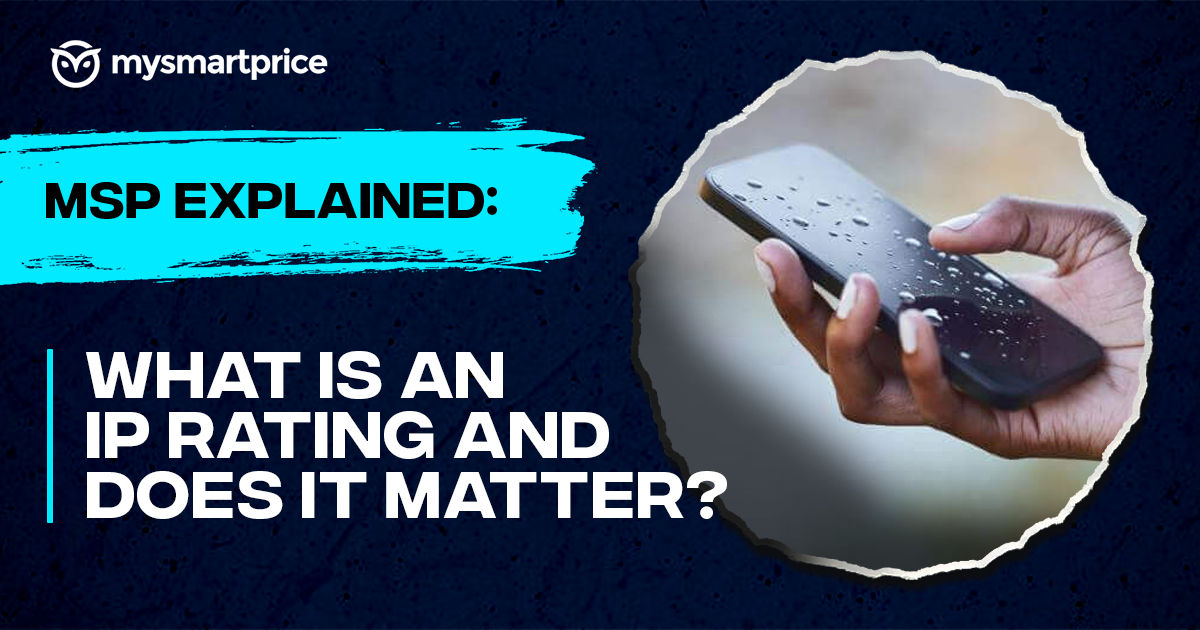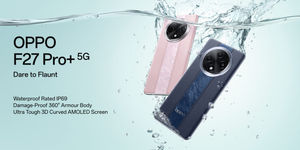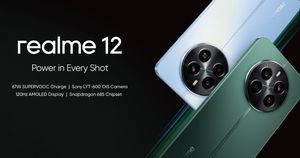
Have you ever wondered what those “IP” numbers on your phone mean? They reveal a lot about how well your phone can handle dust and water. While manufacturers aggressively advertise this feature for durability, your phone might not be as “waterproof” as you think, even if it has a high IP rating. In this guide, let’s uncover the secrets behind those ratings and explore the real-world limits of water resistance.
What are IP Ratings?
IP ratings, also known as Ingress Protection ratings, are a globally recognized system for classifying the degrees of protection a device offers against solid objects (like dust) and liquids (like water). These ratings are denoted by the letters “IP” followed by two digits, each representing protection levels for solids and liquids.
The first digit in the IP rating denotes the protection levels against dust and other solid particles, while the second number highlights resistance towards liquids, mainly water. Higher numbers mean better protection from dust and water.
Here’s a table to understand the exact levels of protection according to the standard IP ratings:
| IP Rating Number | First Digit (Protection against solids) | Second Digit (Protection against liquids) |
| 0 | No protection against solid objects | No protection against liquids |
| 1 | Protection against objects larger than 50mm | Protection against vertically falling drops of water |
| 2 | Protection against objects larger than 12.5mm | Protection against water droplets falling at an angle of up to 15 degrees |
| 3 | Protection against objects larger than 2.5mm | Protection against spraying water at an angle of up to 60 degrees |
| 4 | Protection against objects larger than 1mm | Protection against water splashing from any direction |
| 5 | Dust-protected (But not entirely dust-tight) | Protection against water jets from any direction |
| 6 | Dust tight (no dust particles can enter the device) | Protection against powerful water jets |
| 7 | – | Protection against temporary immersion in water (usually up to 1 meter for 30 minutes) |
| 8 | – | Protection against continuous immersion in water (under conditions specified by the manufacturer) |
| 9 | – | Protection against high-pressure, high-temperature water jets |
Among these ratings, IP52, IP67, and IP68 are commonly found on smartphones. Let’s understand how you can read these ratings from the above table to understand better.
- IP52 rating: The device is protected against dust particles and tiny water splashes. However, the device is not completely water resistant.
- IP67 rating: The device is completely resistant to dust, and partially resistant to water. The gadget won’t be harmed if submerged under water for a short while.
- IP68 rating: The device is highly resistant to both dust and water. It can be submerged under water for longer durations under normal conditions.
In this manner, you can combine the corresponding meaning of each number in an IP rating to get an exact idea of a device’s water and dust resistance capabilities.
Note: In some cases, you may also see ratings with only one number, like IPX7, IPX8, or even IP5X, and IP6X. It means the device only offers resistance against dust with no protection against liquids, and vice versa.
Water-resistant or Waterproof?
While an IPX7 or IPX8 rating suggests protection at a specific depth (usually 1.5 meters), it’s important to remember that these ratings are determined under controlled laboratory conditions. In real-world scenarios, factors like water temperature, movement, pressure variations (especially at greater depths), and the duration of submersion can all affect a device’s water resistance. Moreover, this applies to freshwater (say, in a pond or a tub) but doesn’t offer protection in saltwater or a swimming pool with chlorinated water.
Hence, even if your device manufacturer advertises that your phone is water resistant up to 1.5 metres, you should not take these numbers in an actual sense. Remember that your smartphone, smartwatch, or any product is water resistant, and NOT waterproof.
Despite carrying an official IP rating, your phone may get damaged even by slight water splashes due to various factors. Even if you accidentally damage your phone with water, your manufacturer will not provide any warranty support. Hence, it’s highly advised that you avoid taking your phone to swimming pools, beaches, or any other areas where it can get exposed to water.
Many phone makers advertise their devices as water-repellant instead of denoting an official IP rating. It means that the device only offers basic levels of water resistance, mainly towards sweat, moisture, or tiny water droplets. However, the resistance is not enough to protect against rain or water splashes. This phenomenon is common in budget and entry-level smartphones.
How Are Phones Made Water-Resistant?
It can be difficult to make electronic components water-resistant due to high costs. Your smartphone uses a combination of rubber gaskets in all joints such as the gap between the screen and the frame, SIM card tray, USB-C port, speaker grills, and other openings, to prevent water and other liquids from seeping inside.

The internal components such as the processor, RAM, display panel, battery, etc. are not water resistant. Hence, the water resistance of your phone depends on how tightly it is sealed across all openings.
Since a chain is only as strong as its weakest link, even small damage to the seal near the SIM tray, speaker, or any other area can compromise the entire water resistance of your phone. Over time, these rubber seals can wear out due to regular wear and tear. So if your device is more than two years old, it’s best to keep it away from water.
ATM Ratings: An Alternative Measure of Water Resistance
While IP ratings are common for smartphones, the watch industry uses the ATM (atmospheres) method to denote water resistance. 1 ATM means the normal atmospheric pressure at sea level, i.e. the earth’s surface where we generally use our watches. As we go deeper inside the water, the atmospheric pressure increases. When the water depth increases by 10m, the ATM rating increases by 1 unit.
Here’s a quick guide to understanding ATM water resistance ratings:
- 3 ATM (30 meters): Splash resistant, suitable for light rain or hand washing
- 5 ATM (50 meters): Suitable for swimming in shallow water
- 10 ATM (100 meters): Suitable for snorkelling and swimming in deeper water
- 20 ATM (200 meters) and above: Suitable for scuba diving
Although ATM ratings may offer more water resistance than IP ratings, these numbers are again tested under ideal conditions. In real life, factors like temperature, salt contents of water, wave current, etc. can significantly affect the exact water resistance levels of the device.
Unless you have a watch specially designed for swimming and underwater activities, such as Garmin Descent Mk1 or others, you should not take your watch in deep waters. Even the Apple Watch Ultra is designed only for shallow waters, and the company recommends users avoid taking the watch for scuba diving.
Some devices also carry a Military Certification rating, which is denoted in an alphanumeric format like MIL-STD-810G. Such smartphones go through 29 tests towards water, heat, shocks, vibrations, moisture, humidity, etc. making them fit for military-grade usage. They are also known as rugged smartphones. A prime example of this category of smartphones is the Samsung Galaxy XCover7 (see our review), which was recently launched in India.
List of Devices With IP68 Water Resistance Rating
- Samsung Galaxy S24 Ultra
- iPhone 15 Pro
- Vivo X100 5G
- Xiaomi 14 Ultra
- Motorola Edge 50 Pro
- Redmi Note 13 Pro+
Smartphone manufacturers are also upgrading towards an IP69 rating, the maximum possible rating. It makes the device resistant towards high-pressure water jets, and dust resistant. The OPPO A3 Pro was recently launched in China with an IP69 rating, and it is one of the first sets of phones to achieve this feat. There’s an IP69K rating too but it’s mainly for the transport sector.
Conclusion
Although modern smartphones are highly resistant to water with IP68 ratings, they are still electronic gadgets. If your normal phone usage involves being in places near water, having a smartphone with an official IP rating is a good-to-have feature.
However, as discussed in this guide, IP ratings are not completely foolproof, and phone makers do not offer warranty support for water damage. It’s always better to stay cautious and keep your phone away from water and moisture, even if it’s certified with an IP68 rating.














